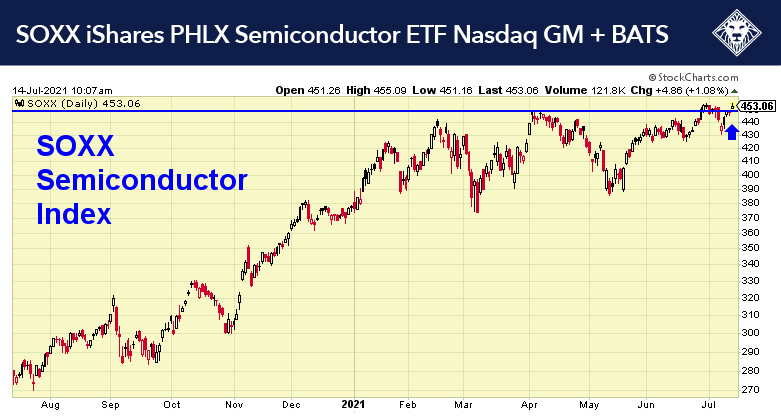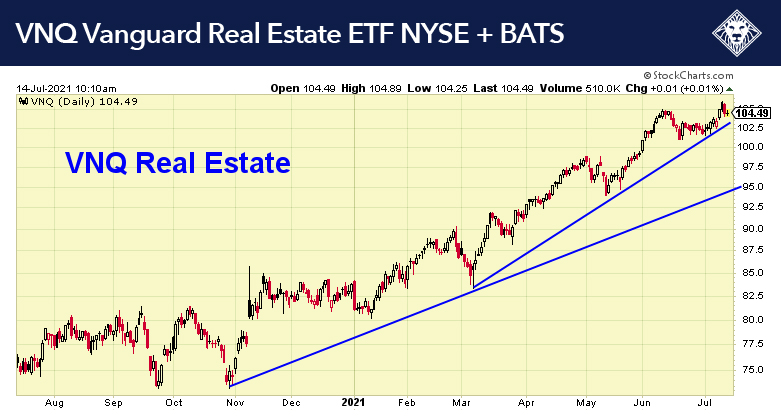Semiconductors Set to Boom Amid Component Shortages
The market is overbought, and a correction is warranted. But again, as long as the HCM-BuyLine® is positive, which it clearly is, any pullback should be bought. We do expect the market to be even higher than it is now by year-end.

Technology has been on a tear after lagging for most of the year. If you will recall, I have been steadfast in saying buy tech and stay overweight in tech, which is working very well for us. We took a large position in the semiconductor index, SOXX, this week. SOXX is starting to break out, and our quantifiable metrics are showing very favorable odds of this index/ETF moving higher in the near-term.

The Vanguard real estate ETF, VNQ, is showing a strong uptrend on both its daily and weekly charts. Some sector rotation is clearly evident, and the sector is showing strong relative strength against the broader markets. Housing is becoming a hot commodity, and office space is still slow but should benefit from the reopening trade.
The Consumer Price Index (CPI) surged 0.9% in June, the most since June 2008, and nearly double the consensus of 0.5%. Similar to the past several months, more than 1/3 of the increase was attributed to a record 10.5% jump in used car and truck prices. That market has been hammered by stronger demand as the economy reopens and low inventory as the flow-through from new vehicles has been squeezed due to semiconductor and other component shortages. There is a case to be made that these disruptions are easing, as new vehicle production picked up in May and wholesale used vehicle prices, as gauged by the Manheim Index, declined in June for the first time this year.
Nevertheless, the increase in prices in June was broad-based. Food prices rose 0.8%, the second most since July 2008, with both food at home and away from home rising by more than in the previous month. Energy prices picked up 1.5%, led by gasoline. Core CPI, which excludes food and energy, jumped 0.9%, the second most since September 1981, and also above the consensus of 0.5%.
The predominant theme remains that inflation is driven by temporary demand/supply imbalances due to the reopening of the economy (i.e., stronger demand) and supply constraints (i.e., production bottlenecks, supply chain issues, labor shortages). The reopening theme was plenty evident in the components with the largest price gains, including vehicles, air fares, hotel rooms, and restaurant meals. As these imbalances are corrected over time, price pressures should subside, although the timing is uncertain. The Fed admitted as much in its latest Monetary Policy Report, released ahead of Chairman Powell’s testimony to Congress today and tomorrow, where price pressures were described as “more lasting but likely still temporary.” Combined with the Fed’s acknowledgement that the labor market has improved substantially in 1H 2021 and maximum employment may look different from the pre-pandemic period, this may move the Fed closer to tapering of its asset purchases.



